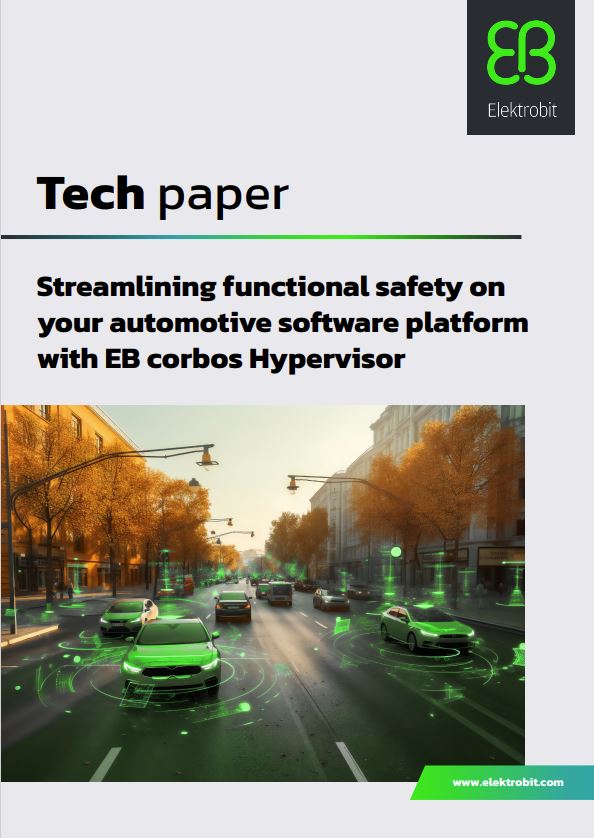
Table of contents
1. Reducing your safety footprint is the key to efficiently and effectively achieving functional safety
2. Not all elements of a safety-related platform must be safety elements
3. Reducing your safety footprint means minimizing safety-related elements and isolating them from other elements of the system
4. Minimizing your safety footprint can save development time compared to a monolithic software platform
5. A hypervisor provides a safe and secure foundation for safety-related software stacks
6. The EB corbos Hypervisor provides a foundation to effectively and efficiently create a safe and secure software platform
7. What can the EB corbos Hypervisor do for you?
8. Conclusion
This tech paper highlights the impact of these challenges on the overall safety and quality of the software platform and proposes a powerful solution—utilizing a bare-metal hypervisor—to streamline functional safety processes. A hypervisor virtualizes hardware resources, allowing software stacks tailored for their applications to run concurrently on a single hardware platform.
Effectively achieving functional safety in the automotive domain means designing and developing a vehicle’s systems to sufficiently minimize the risk of malfunctions that could potentially lead to accidents, injuries, or fatalities. Effectively achieving functional safety goes beyond simply checking boxes or meeting regulatory requirements.
For a software platform, it means understanding the risks on the software platform for all phases of the development cycle and implementing measures to sufficiently avoid and mitigate these risks. This process impacts the underlying software infrastructure upon which vehicle systems and their applications are developed, integrated, and deployed.
Click on the button to load the content from Pardot.


